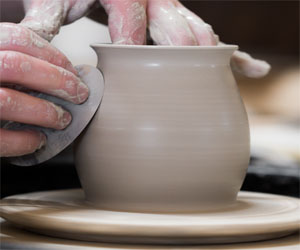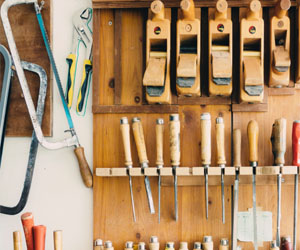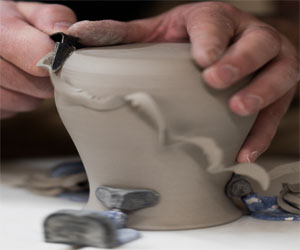


The Art And Science Of Brewing

Beer, one of the oldest and most beloved alcoholic beverages, is a product of both art and science. Its rich history dating back thousands of years has given rise to a tradition of craftsmanship that continues to thrive today. Behind every great brew lies a blend of artistry, precision, and passion, making beer craftsmanship a revered and essential element of the brewing world.
At its core, beer craftsmanship is the art of turning simple ingredients - water, malt, hops, and yeast - into a harmonious and balanced libation that tantalizes the senses. It begins with selecting the finest quality ingredients. Craftsmen understand that the quality of the raw materials is the foundation of a great beer. They carefully choose specific malt varieties for flavor, hop types for bitterness and aroma, and yeast strains for fermentation characteristics. The combination of these elements is the first brushstroke in the canvas of brewing.
The brewing process itself is a blend of science and artistry. Precise temperatures, timings, and techniques are used to extract the desired flavors from the malt and hops. The brewer's expertise in managing the mashing, boiling, and fermentation stages is crucial in shaping the beer's character. A masterful brewer knows when to push the boundaries of traditional techniques to create something extraordinary.
Beer craftsmanship is not confined to one specific style; it encompasses a broad spectrum of beer types and brewing methods. From the hoppy delights of an India Pale Ale (IPA) to the rich complexities of a barrel-aged stout, each style demands its unique approach. The craftsmanship is in understanding the nuances of the style and executing the brewing process accordingly. It's about knowing the right moment to add the hops, the optimal yeast pitching temperature, and the ideal fermentation conditions.
Another crucial aspect of beer craftsmanship is quality control. Craftsmen continually monitor their brews throughout the fermentation and conditioning stages, ensuring consistency and flavor stability. They understand that a small deviation in the brewing process can result in a vastly different beer, and maintaining the intended flavor profile is paramount.
In the craft beer movement, beer craftsmanship goes beyond the brewing process. It extends to branding, marketing, and presentation. Craft breweries often take pride in unique packaging, labels, and taproom aesthetics, offering consumers a complete sensory experience that complements the liquid inside the bottle or glass.
Craftsmen also embrace innovation. They experiment with new ingredients, techniques, and styles, pushing the boundaries of what beer can be. This spirit of innovation has led to the creation of entirely new beer categories, such as sour ales and fruit-infused brews, expanding the palate of beer lovers.
Beer craftsmanship is a blend of tradition, science, and artistry that elevates brewing from a mere beverage production to a true craft. The dedication to sourcing the finest ingredients, the mastery of brewing techniques, and the passion for creating exceptional flavors are all facets of the craftsmanship that defines the world of beer. Whether it's a small, family-run brewery or a larger craft beer producer, the commitment to quality and the pursuit of excellence is the common thread that unites all beer craftsmen. This age-old tradition continues to evolve and thrive, offering beer enthusiasts a diverse and exciting world of flavors and experiences to explore. Cheers to the craftsmanship that makes beer a timeless and cherished art form.
The Allure Of Vintage Items
 A Glimpse Into The Past
A Glimpse Into The Past
Vintage items transport us back in time, allowing us to connect with the past and experience the styles and aesthetics of bygone eras. Each vintage piece carries a story, representing the culture, trends, and craftsmanship of the time in which it was created. It's like holding a tangible piece of history in your hands.
Unique And One-Of-A-Kind
One of the primary attractions of vintage items is their uniqueness. Unlike mass-produced modern goods, vintage pieces are often one-of-a-kind or produced in limited quantities. This rarity gives vintage items a sense of exclusivity and individuality, making them highly sought after.
Quality Craftsmanship
Vintage items are known for their superior craftsmanship. In the past, attention to detail and quality were highly prized, resulting in products that were built to last. Vintage clothing often features hand-stitched seams, while vintage furniture may showcase intricate woodwork.


The Art Of Shaping Clay On A Potter's Wheel
 A Glimpse Into History: Wheel-throwing has an ancient history, with its origins dating back to around 4000 BCE in regions such as Mesopotamia and China. These early potters used simple, hand-driven wheels to craft their vessels. The technology evolved over time, leading to the development of foot-powered and, eventually, electric pottery wheels, which are widely used today.
A Glimpse Into History: Wheel-throwing has an ancient history, with its origins dating back to around 4000 BCE in regions such as Mesopotamia and China. These early potters used simple, hand-driven wheels to craft their vessels. The technology evolved over time, leading to the development of foot-powered and, eventually, electric pottery wheels, which are widely used today.
The Process: The wheel-throwing process begins with a lump of clay centered on the wheel head. Proper centering is a crucial skill that requires careful hand and foot coordination to achieve balance and symmetry. Once centered, the potter uses their hands to shape the clay, pulling it upward and outward, manipulating the form as it spins on the wheel. The wheel's rotation allows for the creation of consistent and precise shapes.
Technique And Skill: Wheel-throwing is a craft that demands patience and skill. Potters must control the speed and pressure applied to the clay to achieve the desired form. Various tools, such as ribs and wooden or metal shaping tools, are used to refine the shape, create textures, and add decorative elements. The level of precision required in wheel-throwing makes it both an art and a science, where mastery comes through experience and practice.
Functional And Artistic Pottery: One of the most remarkable aspects of wheel-throwing is its versatility. Potters can create a wide range of functional items, including cups, bowls, plates, and vases. The uniformity and precision offered by wheel-throwing make it well-suited for producing pottery used in daily life. At the same time, many artists utilize the wheel-throwing technique to create decorative and sculptural pieces, pushing the boundaries of what can be achieved with clay.
A Journey Of Craftsmanship And Creativity
 3. Wood Selection: Choosing the right wood is a fundamental step. Different woods have varying characteristics, such as hardness, grain pattern, and color. As a beginner, it's wise to begin with softwoods like pine or cedar due to their ease of workability. Once you gain experience, you can move on to hardwoods like oak, maple, and cherry.
3. Wood Selection: Choosing the right wood is a fundamental step. Different woods have varying characteristics, such as hardness, grain pattern, and color. As a beginner, it's wise to begin with softwoods like pine or cedar due to their ease of workability. Once you gain experience, you can move on to hardwoods like oak, maple, and cherry.
4. Measuring And Marking: Accurate measurements and precise markings are the backbone of woodworking. Learn to use measuring tools, such as tape measures, squares, and calipers. Understand the significance of measuring twice and cutting once, as even minor measurement errors can affect the outcome of your project.
5. Wood Joinery: Wood joinery refers to the methods used to connect pieces of wood together. Basic joint types like butt joints, lap joints, and dowel joints are a good place to start. As you advance, explore more complex joints such as mortise and tenon, dovetail, and finger joints. Proper joinery is essential for strong, stable, and aesthetically pleasing woodworking projects.
6. Finishing Techniques: The finishing touches can make or break a woodworking project. Learn about the various finishing techniques, including sanding, staining, and applying protective coatings like varnish or polyurethane. Proper finishing not only enhances the appearance of your work but also protects it from the elements and wear and tear.
7. Woodworking Plans: For beginners, it's often helpful to work from pre-designed woodworking plans. These plans provide step-by-step instructions, detailed drawings, and a list of necessary materials and tools. Working with plans can help you understand the construction process and build your confidence in the craft.
A Journey To Wellness And Vitality
 Plant-Based Healing: Plants are a rich source of healing properties. Aloe vera, for instance, has been used for centuries to treat burns and skin irritations. Turmeric is renowned for its anti-inflammatory and antioxidant properties. Ginkgo biloba is used to enhance memory and cognitive function.
Plant-Based Healing: Plants are a rich source of healing properties. Aloe vera, for instance, has been used for centuries to treat burns and skin irritations. Turmeric is renowned for its anti-inflammatory and antioxidant properties. Ginkgo biloba is used to enhance memory and cognitive function.
Herbal Elixirs: Herbal remedies often take the form of teas, tinctures, or infusions. Herbs like chamomile and lavender are known for their calming effects, while Echinacea is a popular choice for boosting the immune system.
Essential Oils: Essential oils are highly concentrated extracts from plants and are used in aromatherapy and topical applications. Lavender oil promotes relaxation and sleep, while tea tree oil has potent antimicrobial properties.
Healing Crystals And Minerals: Crystals like amethyst, rose quartz, and citrine are believed to possess healing energies. They are often used in energy work and meditation to restore balance and harmony.
Creating Art From Earth
 2. Stress Relief: Working with clay has a therapeutic effect. The tactile experience of manipulating the cool, moist material, combined with the meditative process of shaping, pinching, and molding, can help alleviate stress and promote mindfulness. As you immerse yourself in the creative process, daily concerns tend to fade away.
2. Stress Relief: Working with clay has a therapeutic effect. The tactile experience of manipulating the cool, moist material, combined with the meditative process of shaping, pinching, and molding, can help alleviate stress and promote mindfulness. As you immerse yourself in the creative process, daily concerns tend to fade away.
3. Sense Of Accomplishment: Completing a pottery project can be immensely rewarding. The tangible nature of the craft allows hobbyists to see the fruits of their labor take shape before their eyes. Whether it's the first pinch pot or a finely glazed vase, the sense of accomplishment is empowering and boosts self-esteem.
4. Functional And Decorative Items: Pottery offers a practical aspect as well. Hobbyists can create personalized, one-of-a-kind items for everyday use, such as plates, bowls, and utensils. These functional pieces can add a special touch to your home while showcasing your craftsmanship. Alternatively, pottery can be used to craft decorative items, making your living space uniquely beautiful.
5. Continuous Learning: Pottery is a hobby that offers endless opportunities for learning and growth. From mastering basic techniques like coiling, slab-building, and wheel-throwing to experimenting with glazes, there's always something new to discover. Experienced potters can push their boundaries by exploring advanced methods and complex forms.
6. Community And Connection: Pottery is often a social activity, and many enthusiasts find their way to local pottery studios or community centers to practice their craft. This opens the door to a community of fellow potters who share their passion. It's a great way to meet like-minded individuals and build connections through a shared hobby.